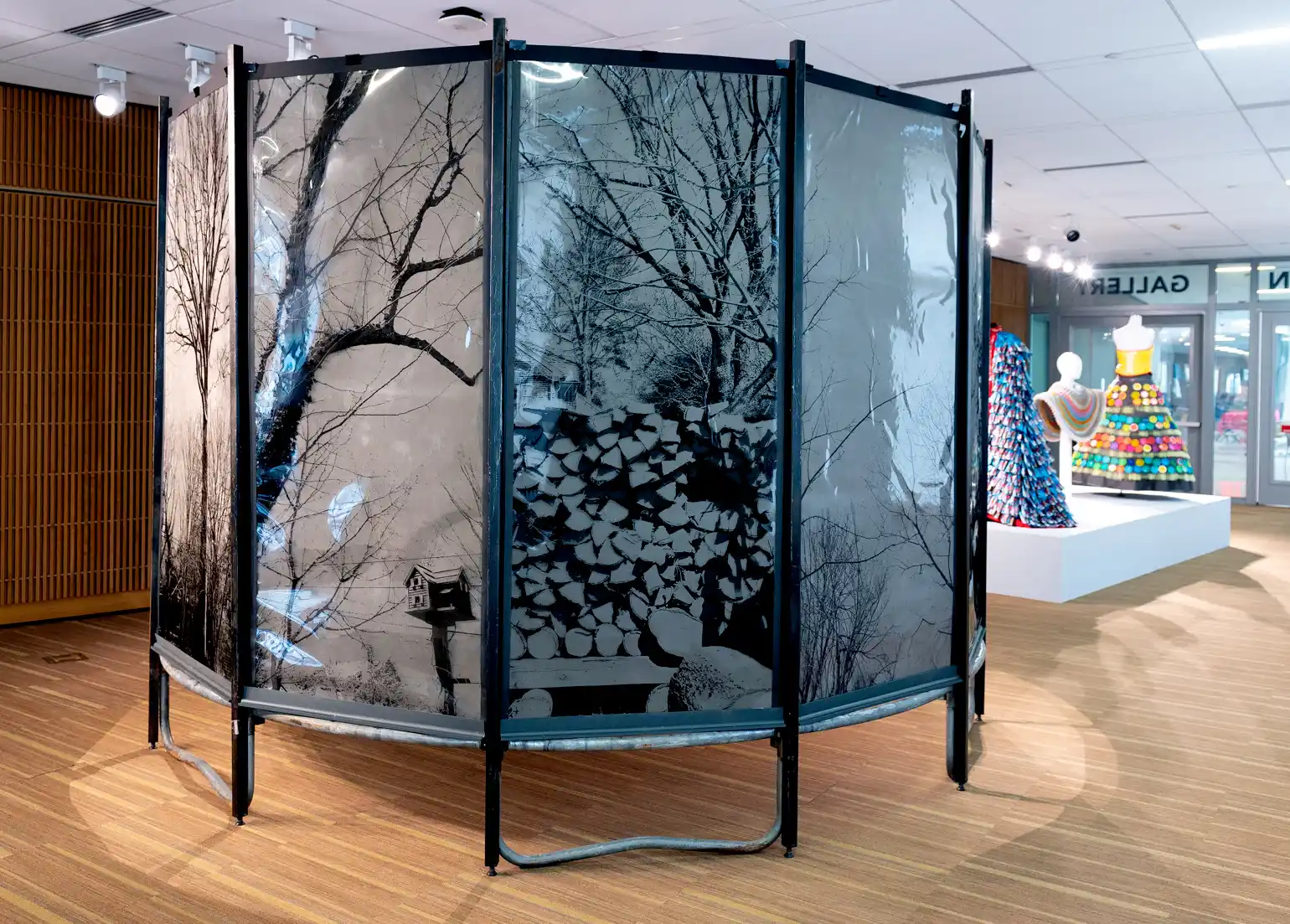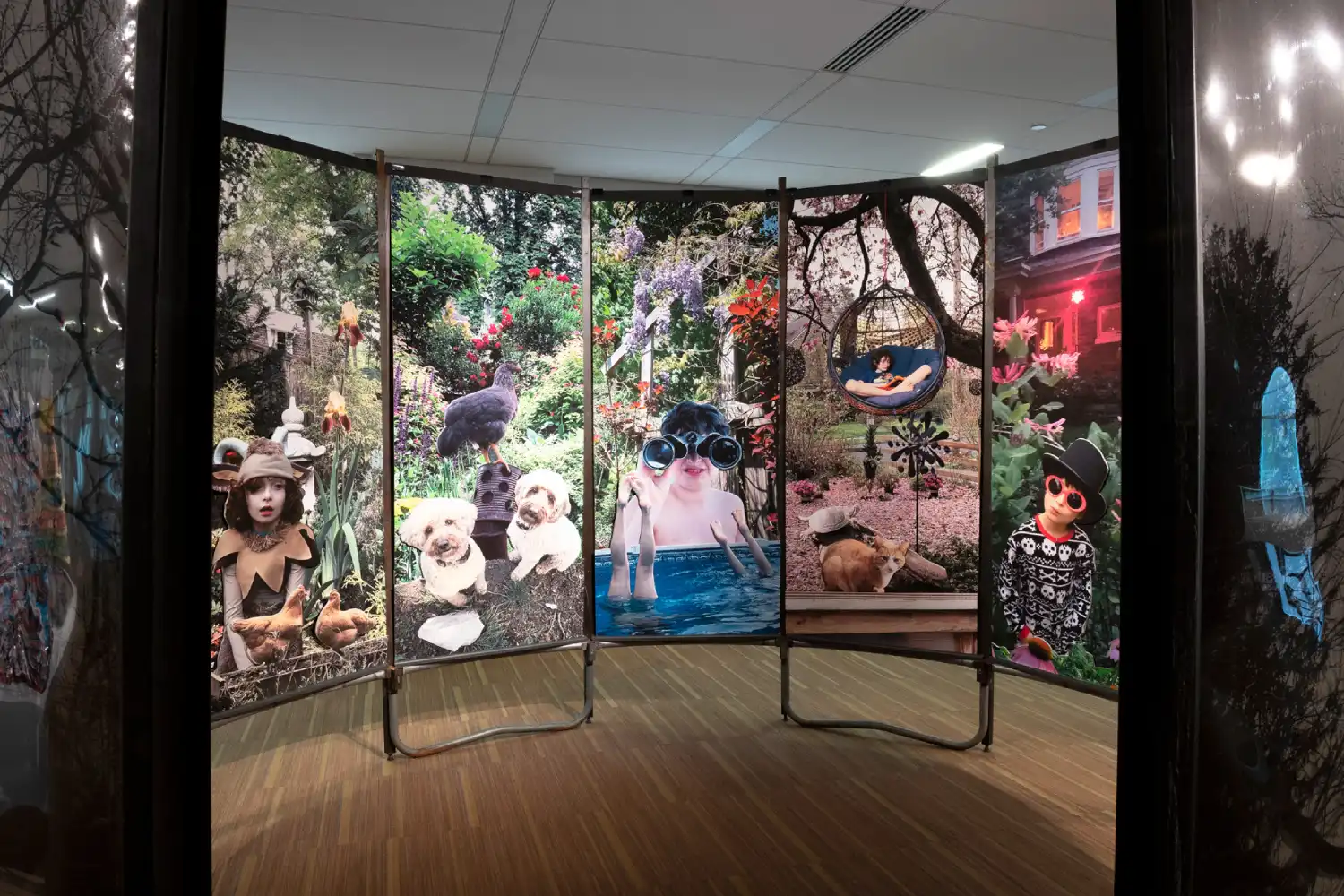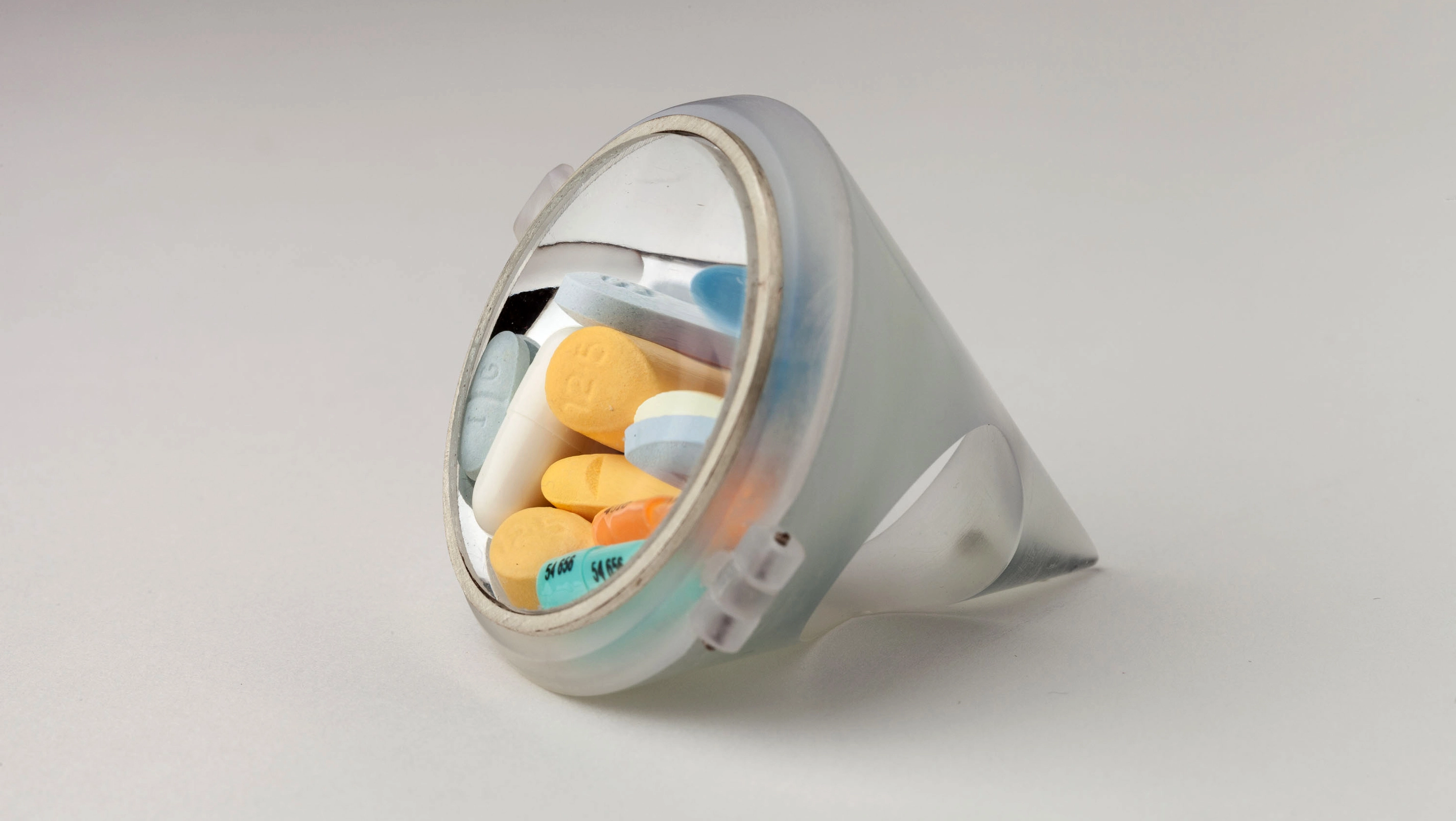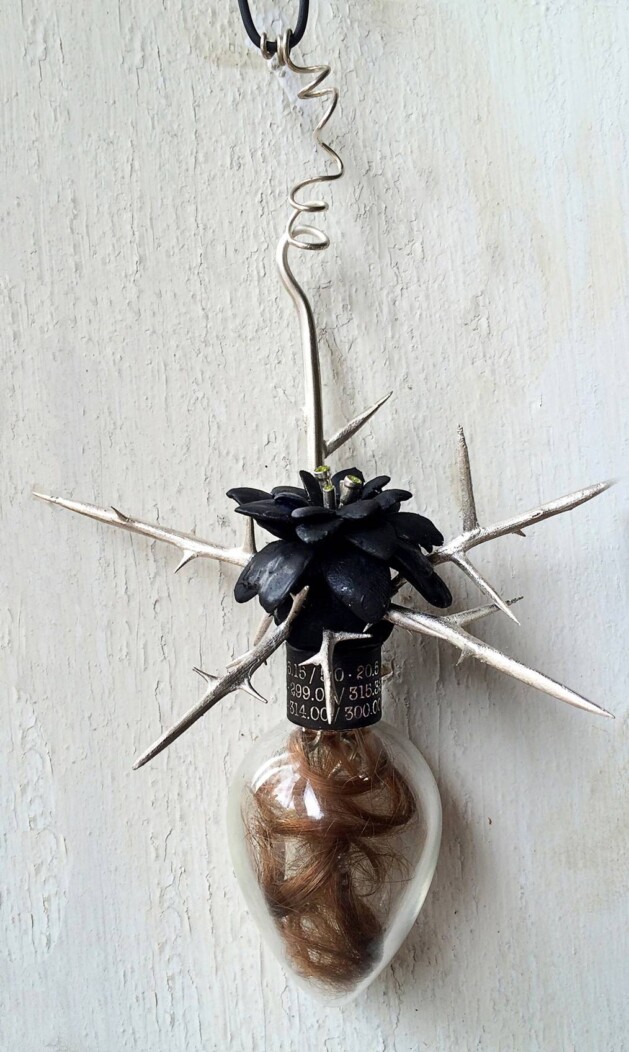October 11, 2022 – February 5, 2023
Harrison Gallery
Arcadia Exhibitions is pleased to present “Karen Misher: Home and Other Reflections” in the Harrison Gallery, University Commons beginning October 11, 2022 through February 5, 2023. Misher, an associate professor in the Department of Art and Design, as well as a Beaver College alumna, is generally regarded for her metal pieces, worn on the body, which dynamically combine the visual language of jewelry and sculpture.

Installation view, "Karen Misher: Home and Other Reflections," Harrison Gallery, exterior view of Home, 2022, site-specific installation, trampoline parts, steel, digital prints, sampled audio, photo: Sam Fritch
In this exhibition the artist offers a new body of work, shown as a whole for the first time. Although it includes various forms of body adornment, the work also ventures into the domains of large-scale sculpture, video, and sound, highlighting the artist’s multidisciplinary approach to her studio practice. Undertaken over the preceding five years, these pieces represent Misher’s impulse to document and share the complexity of her daily existence as a mother of twin boys with special needs.
At the heart of the exhibition stands Home, a steel-framed, 12-sided, structure constructed on top of the remains of an outdoor trampoline worn out by Misher’s children. On each of the exterior panels of Home are printed black and white images offering various views of the artist’s backyard in winter. While inside the structure viewers will experience overlapping layers of ambient sound that documents Misher’s family in their household environment. This experiential work brings the audience into a familiar setting while also exposing them to the often hidden nuances of the autism experience.
The use of the defunct trampoline as the physical and metaphorical foundation for this installation is just one example of a thematic strategy employed by Misher throughout this series in which she utilizes “vestige objects” to represent specific moments in her family’s narrative.

Installation view, "Karen Misher: Home and Other Reflections," Harrison Gallery, interior view of Home, 2022, site-specific installation, trampoline parts, steel, digital prints, sampled audio, photo: Sam Fritch
Although the instinct for parents to hold onto keepsakes which signify moments in their children’s growth and development is not unusual, Misher’s selections strive to memorialize events that are marked as much by anxiety and crisis as they are by joy and accomplishment. Some of her chosen mementos are more traditional, such as in Blackbird (2015), a necklace containing a lock of her son’s hair. This deliberate evocation of traditional Victorian mourning jewelry serves to commemorate, for Misher, receiving the diagnosis that both her sons were on the autism spectrum.
Conversely, Daily Dose (2017) is a ring fabricated with built-in compartments which house the various medications employed to manage symptoms of autism, including severe anxiety, ability to focus, and obsessive compulsive disorder. The use of these medications symbolizes for the artist, a sacrifice, albeit an essential one, of her children’s purity.

Karen Misher, Daily Dose, 2017, 3D printed resin, concave mirror, prescription medication, and silver, photo courtesy of the artist
Yellow plastic Play-Doh cups, objects vital to one of Misher’s son’s stimming behaviors, play a central role in several works in the exhibition. For example, at the center of the spoken word performance Ode to Fairy Cup Mother (2017) is a brightly colored ball gown adorned with over 400 Play-Doh cup lids. In Ode to Fairy Cup Mother Misher relates the story of a woman her family met while on vacation in the Dominican Republic who aided them in a moment of real crisis. The family left home having forgotten to bring a supply of the essential containers, which almost immediately sent Misher’s son into extreme distress. What seems like an innocuous object to others can create a true crisis for some. Despite the language barrier, and the relative isolation of the resort, the family was able to convey to this woman not only what was needed, but why procuring it was so vital. After many unnerving hours, she returned with a supply of the all-important cups in a manner which, in the moment, Misher related to the feeling of witnessing a miracle.
Misher wears the gown while delivering the performance, the dress acting as a surrogate for her family’s Samaritan. Although the narrative begins with a moment of anxiety, the focus of the work is the establishment of a real emotional connection with a complete stranger – of an instant of truly being seen and understood by the outside world.
Recognizing the presence of Misher’s combination of love, dedication, stress, and frustration in these works is key to understanding her goals as an artist and advocate. Although she does highlight the inherent challenges of home life for a parent of children with autism, it would be over-simplistic to come away from this series with the sense of having witnessed a narrative of personal tragedy.
Rather, Misher’s intention in sharing personal experiences in such an unflinching manner is to remind viewers of the highly subjective nature of the term “normal”. If anything, these works reiterate what anyone involved with raising children comes to understand – that no matter the specific circumstances – with child rearing there is no success without failure, and no elation without exasperation. The challenge Misher has set for herself in making this private world public is to achieve dialogue, acceptance, and understanding for a community that is so often misunderstood.


